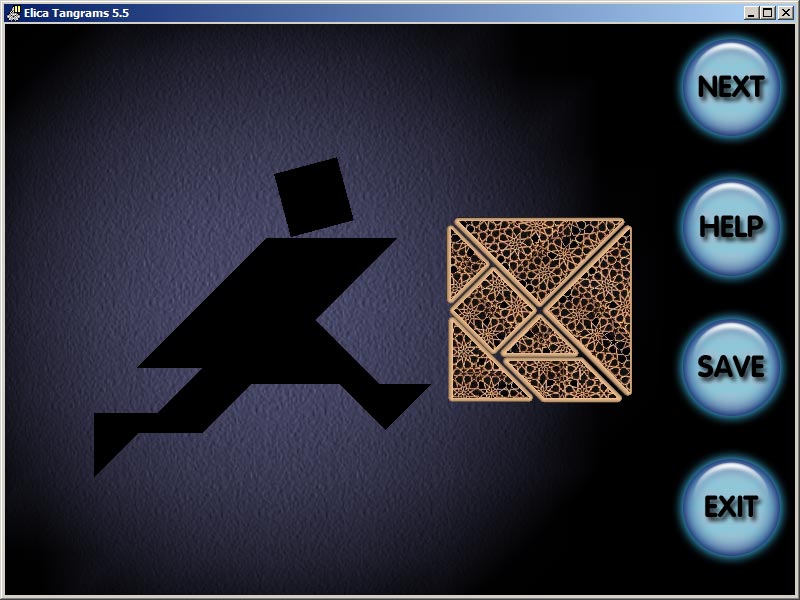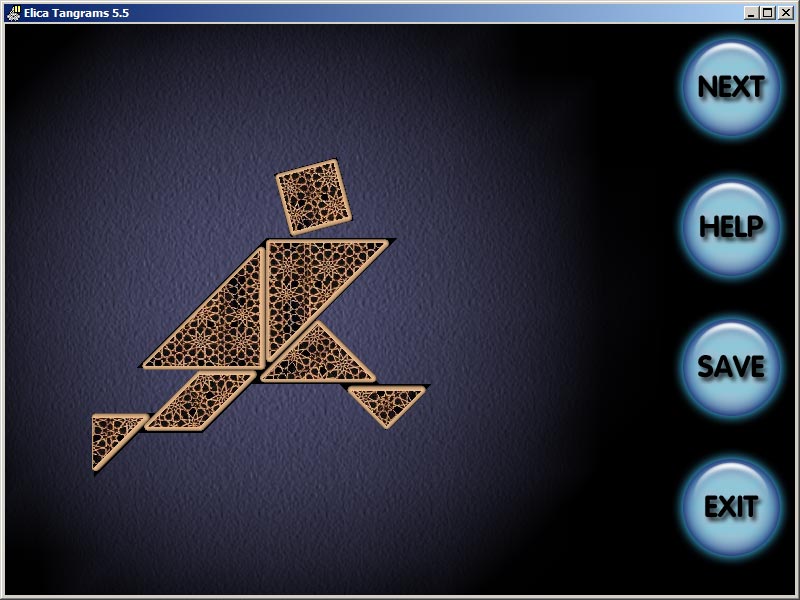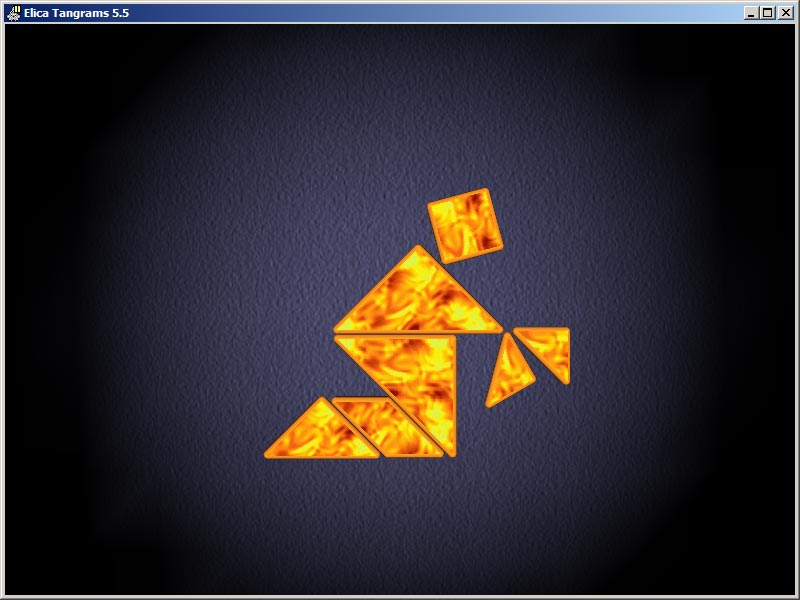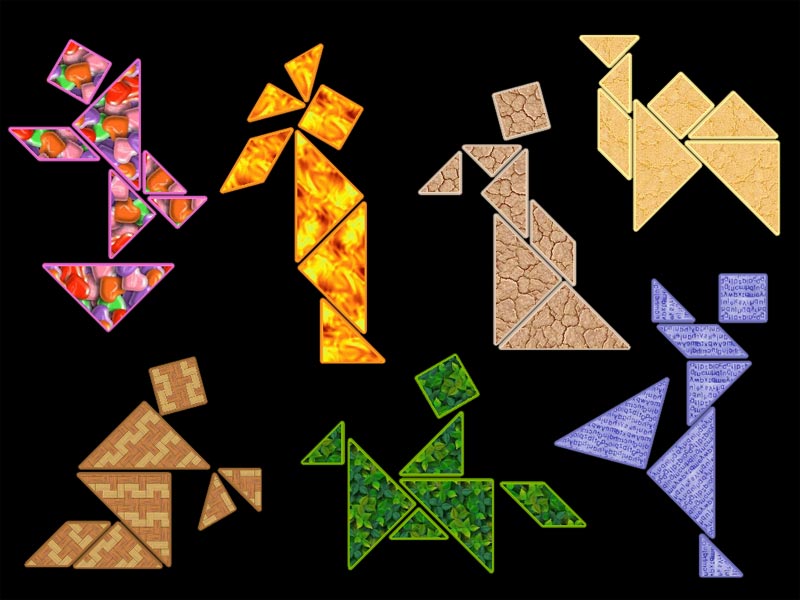



It is not known when Tangram puzzles were invented, but its roots definitely come from China. The earliest known Chinese Tangram book is dated 1813 but the puzzle was very old by then
In the past, Tangrams were considered a game for women and children; today they continue to entertain (and frustrate) people with their contrast of striking simplicity and complexity. The classic rules are simple: you must use all seven tiles, they must lay flat, they must touch, and none may overlap. That's all
This application is an implementation of the Tangrams game. There are 100 puzzles to challenge players. There is no score or any time restriction. Players may play every level as much as they enjoy, they can switch to another puzzle or ask for a help if needed
The game has several sets of tangram tiles and for each puzzle it selects one of them. When the players solve a puzzle it is possible to save a snapshot of the screen into an image file which can be later shown to others (the snapshot is without the game buttons). Players may express their imagination by constructing new figures and build their own galleries
The game itself can be used for many math classes activities, namely, exploring basic geometry figures, applying translation, rotation and symmetry, and developing sense of space and layout
The game is distributed with its Elica Logo source. It can be used to demostrate how to create draggable composite objects, how to react to to mouse and how to build a simple yet addicting game. Advanced students are encourage to add their own sets of tiles and even new puzzles